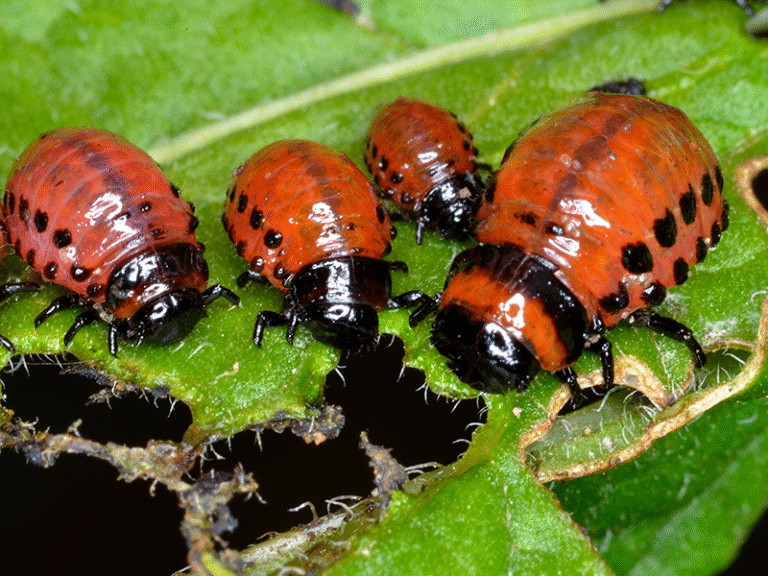New BYU Study Reveals How Mega Wildfires Can Actually Help Forests Recover

A new study from Brigham Young University (BYU) challenges one of the most deep-rooted ideas in wildfire management — that all large fires are bad. The research, published in the journal Fire in 2025, shows that mega wildfires, when they occur in fire-adapted forests, can actually promote forest regeneration and strengthen ecosystem resilience.
The study focused on the 2019 Pole Creek megafire in northern Utah, a massive blaze that burned over 100,000 acres across multiple forest zones. Rather than finding widespread destruction, researchers discovered that some ecosystems benefited significantly — growing back stronger, denser, and more resistant to browsing by wildlife.
The Fire That Sparked New Growth
The Pole Creek fire created a mosaic of burn intensities, ranging from heavily scorched to moderately burned areas, across three main forest types — aspen/fir at high elevations, maple/oak at mid-levels, and pinyon/juniper at lower elevations. Researchers studied how trees and vegetation recovered over three years (2019–2021) following the fire, measuring tree density, height, and herbivore browsing at 34 burned and unburned sites.
At first, wildlife such as elk, deer, and livestock heavily browsed the new growth, slowing down early regeneration. But by the third year, all tree species studied — including aspen, oak, and fir — showed strong positive recovery, with tree densities often exceeding pre-fire levels.
The results highlight an important point: in ecosystems where herbivores are abundant and forests have been deprived of fire for decades, a large mixed-severity fire can provide the reset needed for regrowth. When fires are big enough, the surge of new vegetation outpaces what animals can eat, allowing young trees to establish and thrive.
Why Suppressing Fires Can Backfire
For decades, fire suppression has been the central philosophy of forest management, embodied by campaigns like Smokey Bear that emphasize preventing all wildfires. While this approach reduced fire incidents in the short term, it also caused fuel buildup — fallen logs, dense underbrush, and thick tree stands — turning forests into tinderboxes.
According to the BYU researchers, continually suppressing fires has also disrupted the natural fire cycles that many forests depend on for regeneration. Certain trees, like aspen and oak, evolved with periodic fire. They regenerate quickly from surviving roots, sprouting new shoots that grow faster and more densely after a fire.
In fact, aspen forests are considered pioneer species, meaning they pave the way for other plants and animals to return after a disturbance. These trees also produce chemical compounds that make their leaves unpalatable to herbivores, reducing browsing pressure over time. BYU researchers suggest that aspen ecosystems should ideally burn every 50 to 70 years to maintain healthy regeneration cycles.
How the Study Was Conducted
The research team — led by Professor Sam St. Clair of BYU’s Department of Plant and Wildlife Sciences — conducted the first known large-scale study on the positive ecological effects of a megafire across multiple forest types. The team included former BYU students Devri Tanner, Kordan Kildew, and Noelle Zenger, along with professors Benjamin Abbott, Neil Hansen, and Richard Gill.
Their study combined field data and ecological measurements from 34 paired sites in burned and unburned areas. Researchers tracked seedling survival, growth height, density, and browsing damage caused by herbivores such as elk and cattle. They also looked at how fire severity and forest type influenced regeneration patterns.
By the third year post-fire, they observed that tree regeneration surged beyond the consumption capacity of browsing animals. This finding suggests that megafires can overcome one of the biggest barriers to forest recovery in the western United States — overbrowsing by herbivores.
Understanding the Three Forest Types
The results varied by elevation and forest type:
- Aspen/Fir (High Elevation): These areas showed exceptional regrowth, with aspen rapidly sprouting from root systems and forming dense young stands. Fir trees also began reestablishing as canopy conditions stabilized.
- Maple/Oak (Mid Elevation): Recovery here was strong but slower. Oak responded well to fire, regenerating from underground stems, while maples rebounded gradually over the study period.
- Pinyon/Juniper (Low Elevation): These forests experienced more variable regeneration. While some areas saw strong plant cover and increased species richness, others faced challenges from invasive species that took advantage of the open ground.
Despite these differences, all forest types demonstrated resilience and the ability to recover within a few years — evidence that megafires, under certain conditions, can restore balance to ecosystems that have been disrupted by long-term fire suppression.
Balancing Fire and Wildlife
A key takeaway from the BYU study is that fire and wildlife can coexist. While deer, elk, and livestock have historically limited post-fire regeneration by consuming young plants, the scale and intensity of megafires like Pole Creek may overwhelm that limitation.
In smaller burns, herbivores can easily browse most new growth, preventing forest recovery. But when fires are larger and patchier — with both high-severity and moderate-severity areas — the resulting burst of vegetation becomes too widespread for animals to control. The forests, in turn, regain a balance between growth and consumption.
This interaction between fire and herbivory could reshape how land managers view large wildfires. Instead of only seeing them as disasters, such events might be integrated into forest management strategies to rejuvenate ecosystems and promote biodiversity.
Broader Lessons for Forest Management
The findings from this study are especially relevant for the western United States, which has been gripped by a decades-long megadrought and increasingly severe wildfires due to climate change. Traditional suppression policies have proven unsustainable, as hotter and drier conditions continue to fuel larger and more destructive fires.
Allowing controlled burns or tolerating naturally occurring fires in fire-adapted ecosystems could help restore healthier forests, reduce fuel buildup, and enhance resilience. While large fires come with temporary downsides — like smoke and short-term habitat loss — their long-term ecological benefits may outweigh those costs.
The researchers plan to continue monitoring the Pole Creek sites over time to track long-term recovery trends. Early signs point toward full ecosystem recovery, suggesting that properly managed megafires could become a powerful tool for forest restoration rather than just an emergency to suppress.
How This Fits Into the Bigger Picture
This research adds to a growing body of work emphasizing the ecological importance of natural disturbances. In ecosystems across the world — from grasslands to boreal forests — fire plays a crucial role in recycling nutrients, controlling pests, and creating space for new life.
When humans intervene too heavily, suppressing natural fire cycles, we often create denser, more flammable forests that burn hotter and more destructively when fires inevitably occur. In this sense, the BYU study reminds us that not all fire is bad fire — context matters.
It also highlights the need for adaptive management, where decisions are based on long-term ecosystem behavior rather than short-term appearances. Forests evolved with fire, and reintroducing this element in a balanced way could help restore ecological stability.
Looking Ahead
As climate change continues to intensify weather extremes, understanding how forests respond to large disturbances will be critical for the future of land management. Studies like BYU’s offer evidence that natural resilience can thrive when ecosystems are allowed to function as they evolved to — with periodic, rejuvenating fires.
In the coming years, more research will likely explore how burn severity, frequency, and herbivore populations interact to shape forest recovery. For now, the message is clear: in the right context, megafires aren’t always a catastrophe — sometimes, they’re exactly what nature ordered.
Research Reference:
Regeneration and Herbivory Across Multiple Forest Types Within a Megafire Burn Scar – Fire Journal, 2025 (MDPI)





